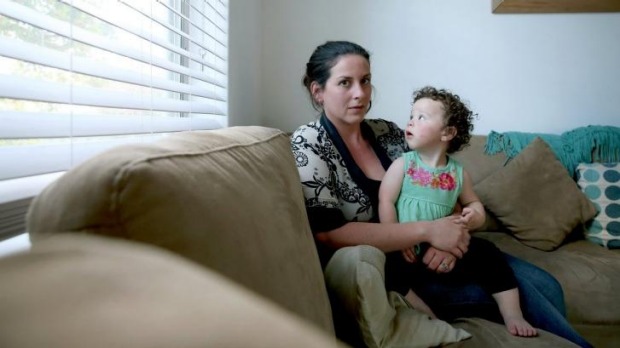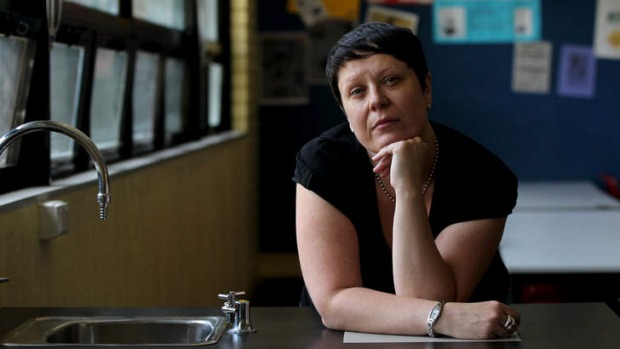New South Wales Department of Education and Communities (Baird Liberal Government):
“As one of the largest employers in the southern hemisphere, the NSW Department of Education and Communities values the contribution our qualified, overseas teachers make in our multicultural school communities.

So what the hell is an Australian state government doing promoting jobs for foreign teachers on its education department’s website?
Australian teachers can’t get jobs because of you cheap foreign ethnics coming here and stealing their positions. Anyway, Australians value being taught by their fellow Australians, not someone with a bloody accent.
 Bugger off ethnic teachers! Teach in your own country, your people need you!
Bugger off ethnic teachers! Teach in your own country, your people need you!
New South Wales smiling Premier Mike Baird is spending hundreds of millions of dollars of federal government funding on trainee teachers who have little chance of getting a job. At the same time, Baird Liberal Government’s Department of Education and Communities is inviting cheap overseas teachers into Australia on its website.
As Australian universities continue to pump out increasing numbers of teaching graduates, the new crop are joining more than 44,000 trained teachers in NSW on a waiting list for a permanent job. Last year only half of the 16,000 trainee teachers who graduated across Australia had secured permanent employment four months after graduating.
 Local Aussie teaching Graduate Ashleigh Garven – one of thousands of Aussie teachers who can’t get a full time teaching.
Local Aussie teaching Graduate Ashleigh Garven – one of thousands of Aussie teachers who can’t get a full time teaching.
Stephen Dinham, a professor of education at the University of Melbourne, accuses universities and colleges of using teaching courses as a “cash cow”, exploiting the federal government’s decision to remove a cap on university places.
Professor Dinham said better workforce planning was needed to limit Commonwealth-supported places for primary education to address the oversupply. He said the uncapping of undergraduate places had also reduced the quality of education standards.
“It is quite unethical to let people train in an occupation profession they are not going to be employed in,” he said.
“There are quite a number of non-traditional colleges that are getting into the teacher training business through being registered providers. This is adding to the pool, particularly for primary and early childhood teaching.
“Moving those resources to filling vacancies in secondary maths, science, languages and special education could be fairly cost neutral.
“We need proper workforce planning rather than people saying it is entirely a university decision as to how many people they train.”
But it is not a problem of ‘oversupply‘. It is government departmental discrimination against qualified Australian teachers in favour of cheap foreign teachers who compete for the jobs and who are prepared to work for pittance, on a casual basis with no leave entitlements or holidays. Often the decision makers are ethnic themselves so they favour their fellow ethnics ahead of Australian teachers. It is foreign scab labour and it needs to be outlawed.
Foreign Scam out of South Australia:
“The Teach in Australia Program is a twelve week intensive bridging course that will equip you with the knowledge, skills and confidence to win a teaching position in an Australian school.”
“Our innovative course for overseas training secondary maths and science teachers, ‘Teach in Australia’ will have a new look for 2015. A key requirement to teach in Australia is a very high level of English language competence. In order to achieve a high level of success we have decided to combine Teach in Australia with an intensive academic English program. This combined program over 44 weeks will ensure that participating teachers reach the required English level whilst undertaking Teach in Australia. Participating teachers will have a student visa and can work part time whilst studying.”
Meanwhile, in November 2013 it was reported that more than 40,000 teachers trained in New South Wales are on a waiting list for permanent jobs in New South Wales.
According to the Department of Education, the waiting list has swelled after averaging about 30,000 over the past five years.
The waiting list exists despite a shortage of high school teachers in maths and science, as well as shortfalls in some regional communities. The supposed “oversupply” of primary teachers is likely to last until the end of the decade even if resignations or retirements double.
 Victoria Greenaway is Australian but can only get temporary teaching in Sydney.
Victoria Greenaway is Australian but can only get temporary teaching in Sydney.
Victoria has been waiting for a permanent teaching position since she graduated from university seven years ago, when she did not anticipate the uncertainty of teaching.
”It affects my career in that certain promotional positions are not available to me because they’ve got to know that you’re going to put your time in at that school and they don’t know if they’re going to be able to employ me next year,” she said. ”It affects your sense of belonging in the school community … and when it comes to things like mortgages, can I commit to buying a flat?”
The NSW Teachers Federation says the fight for permanent roles is being worsened by an increasing preference for casual workers.
”We have thousands of positions that should be filled permanently currently being filled by predominantly young teachers on a casual or temporary basis,” the federation’s president Maurie Mulheron said.
Some young teachers were giving up on the profession because they were frustrated that only casual work was being offered.
Because of the oversupply, most graduates start their career as casual or temporary teachers and some wait years for a permanent job.
The union plans to prosecute the department over what it says is a deliberate attempt by ”a small minority of principals” to leave permanent positions unfilled ”as a way of intimidating young people”.
One casual teacher in the Hawkesbury area, who did not want to give her name because she is applying for jobs, works across five public and Catholic primary schools and often does not know if she is working until 30 minutes before she is needed. The 24-year-old, who graduated last year, has a permanently packed suitcase containing work to teach every year group.
”You can never plan anything and I’m a very organised person, so that’s stressful,” she said. ”I’m trying to save to get a unit but I can’t even make a budget because I don’t know what [work] I’ll be getting.” She said she would have considered a different career path if she knew how difficult it would be.
The department spokesman said there was no time frame for how long Aussie teachers wait on their waiting list. It is in the years.
In NSW last year, 6966 students churned graduated as new teachers but only 2200 permanent jobs were available in government schools. Education graduate statistics looked good for the government, but the figures ignore employment. Funny that. About 1000 of those jobs were advertised which meant that new graduates had to compete with more experienced colleagues. The Education Department gives priority to new graduates, with more than 400 getting a permanent job last year, yet only those on a scholarship are guaranteed work.
Andrew Jackson is one of more than 44,000 trained teachers in NSW on a waiting list for a permanent job. Most on the waiting list – 25,374 – are waiting for a full-time job with a primary school, with the remaining 18,888 looking for work at a high school. Since graduating with an arts degree and a diploma of education from Macquarie University in 2012, Mr Jackson has been working as a casual teacher.
At university he was given the impression he would find work “easily and quickly once you leave uni”. But a frustrating two years followed before he found steady casual work.
Melbourne University professor of education John Hattie says that of the 30,457 students in Australia who studied to be a teacher last year, just over half – 16,650 – completed their qualification. Once they entered the workforce, only 50 per cent secured a full-time job as a teacher in a school within four months of graduating.
Last year about 6966 students completed teacher education courses in NSW. Department estimates say 3315 were qualified to teach at primary schools – the second highest number of graduates on record.
But there are shortages in isolated areas around the state and a national shortage of secondary maths and science teachers.
NSW Teachers Federation president Maurie Mulheron said many teaching positions that should be permanently filled were instead being filled with young casuals.
However, the Australian Council of Deans of Education and University of Sydney Professor of Teaching Education Robyn Ewing said the waiting list figures over-estimated the number of new graduates unable to find a permanent job.
“Our experience is that the oversupply isn’t nearly as high as that list would suggest,” Professor Ewing said. “In terms of our graduates who are able to be flexible about where they are working, they are teaching.”
Education Minister Christopher Pyne said under the government’s reforms “increased competition and the need to attract students will mean universities will focus on courses that have a clear career path for graduates”.
“The exciting thing about the reforms is that giving students the power to pick and choose a degree in a more competitive and dynamic environment will mean universities in partnership with industry may offer degrees with guaranteed jobs at the end of them,” he said.
The government spends about $10,000 to train each student who starts a one-year postgraduate course and almost $40,000 on students completing a four-year undergraduate teaching qualification. The Australian Productivity Commission’ s latest report for 2012 shows the government spent about $450 million on teacher training.
The government said it spent about $617 million on teacher education last year. The number being trained has grown from 15,596 in 2003 to 17,903 last year.
Latest available national figures show that more than 1500 students gain entry to teacher education courses around the country with an ATAR of less than 50.
Australian Education Union president Angelo Gavrielatos said the oversupply of teachers was reducing quality. “We still see growth in the number of people enrolling and a further reduction in the initial teacher education training standards. We can’t afford that,” he said. “When there is no cap and there is a totally deregulated education system what we will see is potentially even more students enrolling and standards further declining. There are more graduating than there are vacancies and that’s why we say there should be better workforce planning.”
So why attract overseas trained teachers?
Australian Teachers First!
No Aussie Accent, No Teachers Ticket, No Start!


